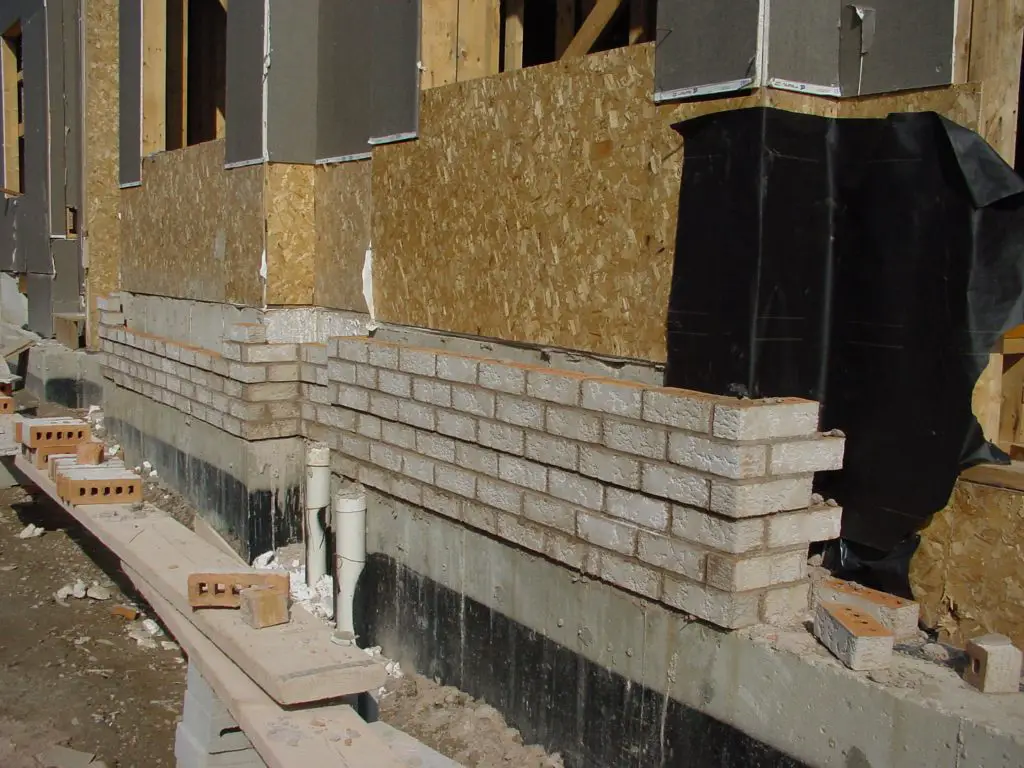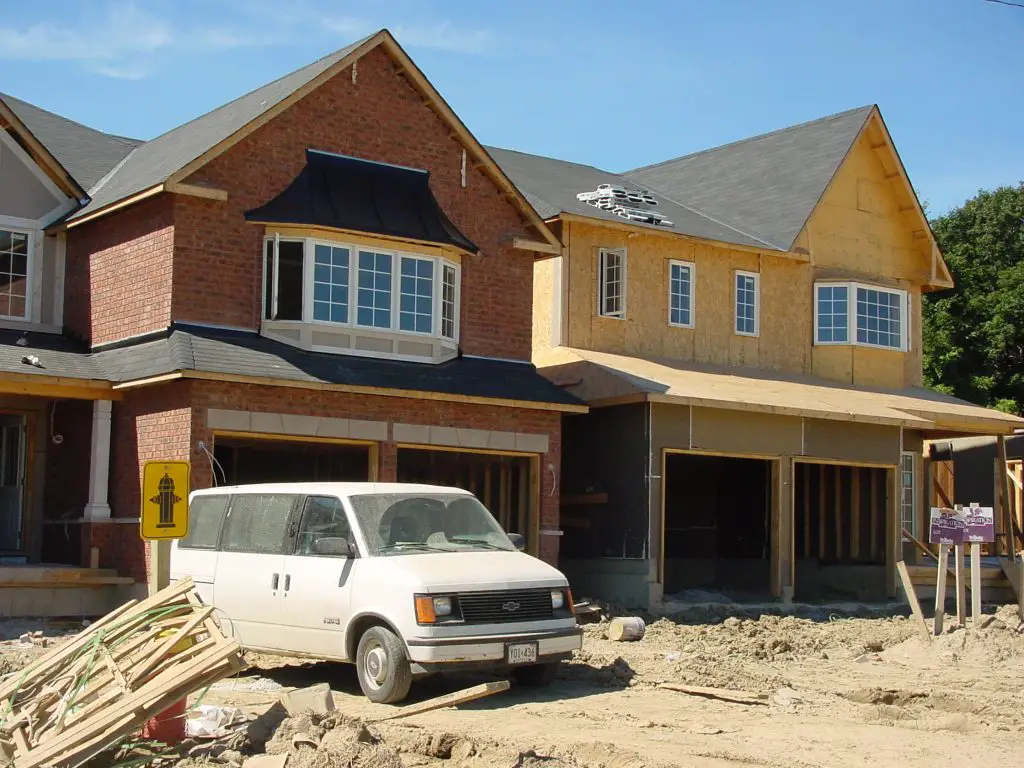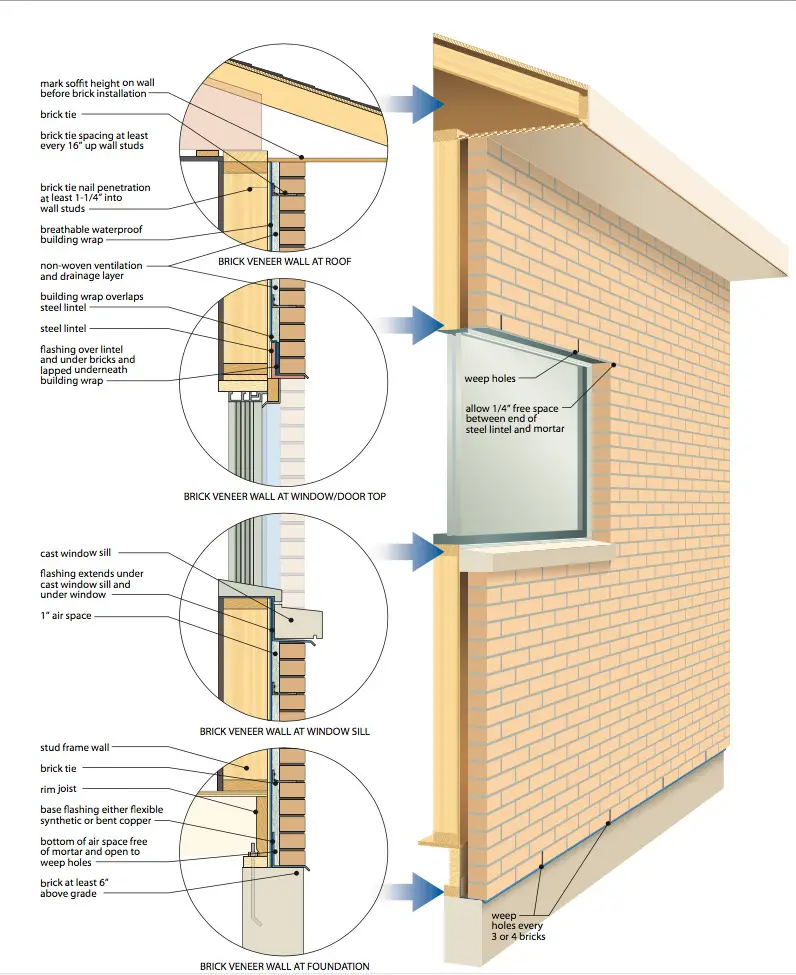UPDATED 23Jul2020 + video below: Masonry wasn’t my favourite homebuilding material when I got involved in building and renovation back in the mid-1980s, but 30 years of dealing with reality has changed my mind. Brick veneer, in particular, offers the best combination of quality and durability of any exterior building material I know of, and there are specific points I mention to people who come to me looking for construction and renovation advice.
Brick veneer is the most common way brick is used in modern home building in cold climates, and it works as part of stud frame construction. A single layer of brick is installed on the outside face of exterior wall frames, with an air space between the brick and the sheathed frame. Insulation is installed within the frame, with drywall or other finished surfaces created on the interior face as usual.

The first thing about brick veneer is that it retains its good looks longer and with far less maintenance than any other exterior building material. The difference is huge. Where it’s common to see dents, scratches, holes and mold growth on other exterior wall options over time, brick veneer just sits there and keeps on looking good, decade after decade. The only potential trouble with brick that I’ve seen is flaking caused by the freeze-thaw cycles we get here in Canada – the freeze-thaw capital of the world. The thing is, it’s easy to avoid this trouble. That’s why it’s rare. Here where I live you simply choose brick that meets CSA Standard A82-06, install it no closer to the ground than 6” and you’ll be fine.

Not many people realize that true brick veneer also offers energy advantages for a home because it adds thermal mass to the structure. On a hot day, the transmission of excess heat to wall frames and insulation is reduced and slowed because it takes time for the brick to warm up. Conversely, it also takes longer for the low temperatures of a frosty night to penetrate the brick and draw heat out of your home. The more you can protect the insulated wall frame of your house from wide swings in temperature, the better that insulation will work. If you could magically apply brick to the outside of a non-brick home as a test, you’d immediately feel a difference inside.
Brick veneer may be one of the most environmentally friendly exterior wall options going, too. And while it’s hard to quantify things like this, there are facts to go by. Brick is made from natural materials and it’s easy to recycle. Given the long life of brick, it also has what they call “low embodied energy”. This means that the energy required to manufacture the brick is lower than other options, given how long brick is expected to last. The National Institute for Standards and Technology, for instance, gives brick a 100 year lifespan, but that’s conservative. Most brick lasts longer than this. So yes, though brick uses quite a bit of heat energy during the manufacturing process, this energy investment goes a long way because it gets spread out over a very long time – much longer than any other non-masonry exterior wall option.
Click below to download a printable diagram that shows proper brick veneer details. Video below, too.

So why isn’t every modern home covered in brick? Cost is the biggest reason why, or at least the perception of cost. Brick is more expensive than most other exterior wall treatments, and this up-front cost plays into short-term thinking. Why pay for 100+ years of durable good looks when you may only plan to be in your new or renovated home for 5 years? There are specific reasons I take the long view on things like this.
The extra money you invest to get brick comes back to you in the form of a faster resale and higher price. People love brick and they’ll pay more because of this. But at least as important to me is the investment in the quality of the homes, towns and cities of the world. Better buildings simply make better places.
Stone is a favourite building material of mine, and I especially like working with natural stone that I quarry and shape myself into arches and corners and walls. Click below for a video tour of how I make round arches from natural limestone using a few simple tools. It has taken me several decades to perfect this technique.